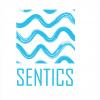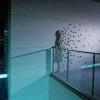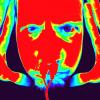golgi1, I'm not really getting your argument here. So you are saying that you need only bilateral stimulation, without any exposure therapy, to get effects in terms of what? From my understanding, it's mostly the exposure therapy that works in emdr, the bilateral stimulation only makes it a bit more effective than coventional exposure therapy. That the speed of eye movements makes a difference is a good find though!
I'm saying that slow eye movements (described in better detail below) bring anxiety relief and, for me, an over-all more even emotional tone with time.
I'd be more comfortable calling my 'current anxiety may equal exposure' hypothesis, rather than an argument, a working hypothesis that theoretically and partially underlies a method with which I'm having positive results. I don't wish it to seem like I'm asserting any of this hypothesis as conclusion.
I'm equating a state of anxiety to exposure; though I haven't gone through any formal exposure therapy myself to be able to note any difference in the emotional effect of GA and exposure due to specific exposure therapeutic technique.
But as I understand it, aside from exposure being more controlled (potentially) in a formal therapeutic environment, a state of anxiety should not be much different than the effect of basic exposure therapy: at its root.
Though, this hypothesis isn't so important to experimentation with this low impact technique.
Agree with this hypothesis or not (I'm not personally attached to it), it may not matter as far as the slow eye movement technique's results are concerned. That is, it may not matter if anxiety is roughly equivalent to exposure therapy for the slow eye movements to reduce it. It may be that the slow eye movement technique could work whether there is a type of exposure present or not.
I read what you are asserting as well, that the exposure therapy is the primary therapeutic technique, but that has not been my direct experience with the (slow) eye movement-only technique. I can't vouch for normal speed EMDR with formal exposure therapy nor for exposure therapy on its own. Only that this modified slow EMDR approach works well enough to not be relegated a therapy that is held to give to a minor effect. Though, normal-to-fast speed eye movements, without exposure therapy, did nothing for me beyond immediate and short term (very minor) relief. The technique that I am endorsing provides no immediate relief in my limited experience, but rather seems to kick in the next day after one sleeps.
This is still working for me. I try to do 1-2 sessions per day, probably not totaling much more than 20-30 seconds per session (for want of time, otherwise I might do more). I simply do the aforementioned modified approach when in the shower, resting on a couch, etc.
I have experimented with doing only one side per day, on either side on different days, and each time it has had a different effect. I should probably experiment more with that.
However, for now, my favorite method is holding to the right side for around 3/4 of the time (ie: 15 seconds) and to the left side for 1/4 of the time (ie: for 5 seconds).
I might switch back and forth twice, but sometimes not even that.
Currently, I can't vouch at all for what might constitute an ideal time spent on each session. The above is only a rather random timeframe that I've been working with. Longer (or possibly slightly shorter) hold times might bring different effects. I also don't yet know if one might realize a continuously enhanced effect with a gradual increase in session time. These parameters are something with which to experiment.
My advice would be to experiment with this yourselves, in terms of experiencing any effect, session timeframes, and hold time ratio between right and left, as its as easy a technique as can be had and there is nothing to lose. My experimentation, so far, has just been that and the specific method should be played with.
My current justification for favoring the right side for 3/4 of the hold time, is that stimulation of the left hemisphere over the right hemisphere might work to reduce illogical emotion in favor of logical processing of that emotion. This working hypothesis isn't any more scientific than that, and should be questioned and experimented with.
Other than a more even emotional state, a primary effect has been deeper dreaming that, for me, came immediately. Perhaps look for that effect as a precursor to a better emotional state that might build after some time performing the technique. That is, if you experience the deeper dreaming but not much else at first, consider keeping with it. Though, also look for a primary emotional effect even without an enhanced dream state. This method could very well effect people differently.
The state that this technique brings, for me, is exciting because it seems to hint at a tangible neuro-therapeutic effect that can be had for zero cost to include expensive tools or therapists. You don't need to invest in an expensive neuro-feedback setup, for instance (which I have but over which I currently prefer this technique), nor even EMDR software, but can manipulate what seems to be your EEG? neuro-architecture? whatever it turns out to be, for what could be good benefit, using nothing but your free time and slow eye movements.
Edited by golgi1, 10 January 2017 - 03:31 AM.























































